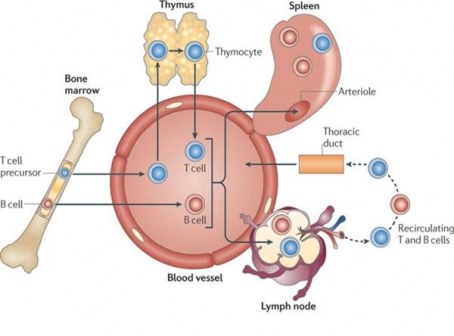Evaluating B Cells: Bone Marrow Precursors
7/8/2014
Evaluating B-Cells: From Bone Marrow Precursors to Antibody-Producing Cells. Rosado MM, Scarsella M, Cascioli S, Giorda E, Carsetti R. Methods Mol Biol. 2013;1032:45-57. doi: 10.1007/978-1-62703-496-8_4.
Lymphocyte characterization is primarily based on the differential expression of surface markers. In this context, flow-cytometry analysis (FACS) is an exceptional technique that not only allows the identification of B-cell subsets, but can also be used to evaluate cell function, activation, and division. Here, we will combine the use of FACS analysis and ELISA techniques to identify murine bone marrow and peripheral B-cell subsets. The main function of B cells, derived through a multistage differentiation process from precursor cells, is to produce antibodies. This task is performed by terminally differentiated B cells called antibody-secreting cells (ASC) present at mucosal sites, in the bone marrow and in the spleen. The number and specificity of ASC can be measured by Enzyme-linked immunosorbent spot (ELISPOT) assay, a variation of the enzyme-linked immunosorbent assay (ELISA) used to quantify serum immunoglobulins.






